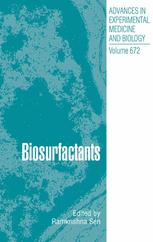

Most ebook files are in PDF format, so you can easily read them using various software such as Foxit Reader or directly on the Google Chrome browser.
Some ebook files are released by publishers in other formats such as .awz, .mobi, .epub, .fb2, etc. You may need to install specific software to read these formats on mobile/PC, such as Calibre.
Please read the tutorial at this link: https://ebookbell.com/faq
We offer FREE conversion to the popular formats you request; however, this may take some time. Therefore, right after payment, please email us, and we will try to provide the service as quickly as possible.
For some exceptional file formats or broken links (if any), please refrain from opening any disputes. Instead, email us first, and we will try to assist within a maximum of 6 hours.
EbookBell Team

0.0
0 reviewsThe microbial world has given us many surprises including microbes that grow under extremely harsh conditions (122C at 40 MPa), novel metabolisms such as the uranium and perchlorate reduction, and novel chemicals that can be used to control diseases. We continually face new and difficult problems such as the need to transition to more carbon-neutral energy sources and to find eco-friendly chemicals and to find new drugs to treat disease. Will it be possible to tap into the seemingly limitless potential of microbial activity to solve our current and future problems?The answer to this question is probably yes. We are already looking to the microbial world to provide new energy sources, green chemicals to replace those made from petroleum, and new drugs to fight disease. To help us along these paths, we are deciphering how microorganisms interact with each other. We know that microbial populations interact and communicate with each other. The language that microbes use is chemical where small molecules are exchanged among different microbial cells. Sometimes, these chemicals suppress activities of competitors and could be used as antibiotics or may have other therapeutic uses. Other times, the chemicals stimulate complex responses in microbial populations such as fruiting body or biofilm formation. By understanding the conversation that microbes are having among themselves, e. g.